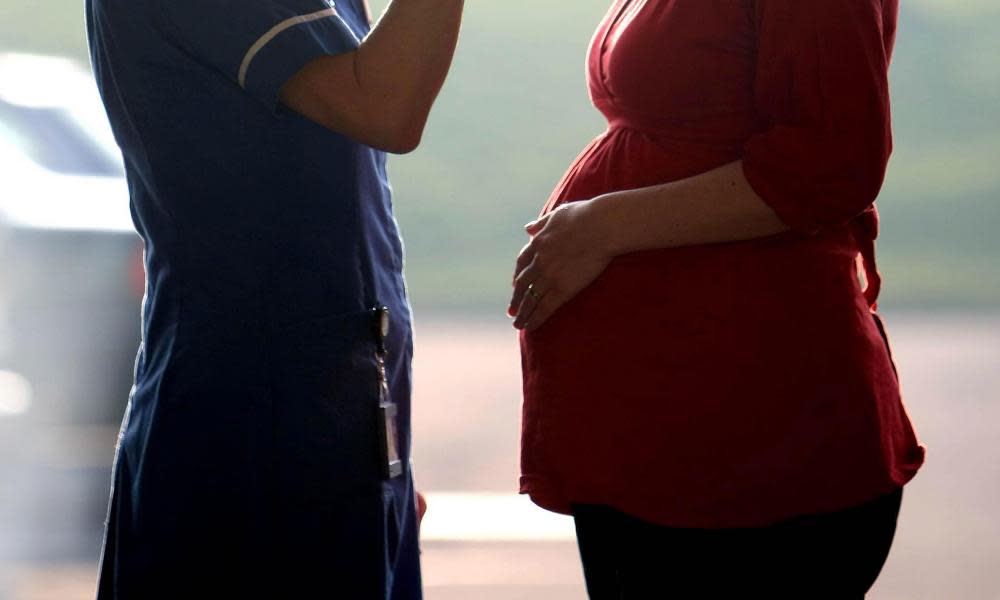Concerns over birthing options as NHS shuts midwife-led centres

They are places where birth balls, water pools and attentive midwives help women have their baby in a calm atmosphere without doctors intervening medically in the process of delivery.
But NHS chiefs have sparked controversy by shutting eight birth centres in England, prompting criticism that pregnant women are being denied the choice of place of birth that all have been promised.
The wave of closures has resulted partly from more women choosing to give birth in obstetric units in hospital, where doctors are in charge, rather than in birth centres, where midwives are the only staff. It is also linked to the shift toward older motherhood, the rise in maternal obesity, the drive to reduce stillbirths and a shortage of midwives.
The Cossham birth centre in Bristol closed temporarily in October. The midwives who ran it were transferred to the maternity unit at the city’s Southmead hospital because North Bristol NHS trust, which runs both facilities, did not have enough staff to operate both safely. It is due to reopen for deliveries at the end of the month, but some doubt whether that will happen.
It has been shut despite 350 babies a year having been born there and the Care Quality Commission, the NHS regulator, praising the outstanding care it offers. CQC inspectors lauded it for promoting water as a form of pain relief and offering a calming and relaxing environment.
“There was a caring culture fully embedded across the service. Time spent with women was not rushed. Care was delivered with kindness, compassion and understanding. We saw exemplary patient-centred care being given, and this was confirmed in patient feedback,” it said.
Lauren Pinkett, whose three children were born there, has organised a petition in a bid to persuade the trust to keep the unit – “a truly special place” – open.
The trust says it had to move midwives from Cossham to Southmead’s maternity unit to staff the six extra beds it has opened there to help it cope with the growing number of women whose babies it is inducing, whether because they older, overweight or obese or who have complex medical problems such as diabetes or heart problems.
“We’re seeing more pregnant women requiring both medical and midwifery care at our main maternity centre so we’ve temporarily closed our smallest birthing unit while we recruit additional midwives,” said Helen Blanchard, the trust’s interim director of nursing and quality. “The closure is a temporary measure and our absolute priority is the safety of all women and babies in our care.”
NHS leaders claim too few women use the birth centres at Trowbridge in Wiltshire and Paulton in Somerset to justify keeping them open. The number of births at Trowbridge has fallen from 291 in 2015-16 to 109 in the first nine months of 2018-19, and at Paulton from 154 to 94.
If the proposed double closure goes ahead, women will instead be able to use birth centres in Chippenham in Wiltshire and Frome in Somerset, under plans put forward by the NHS’s Bath and north-east Somerset, Swindon and Wiltshire local maternity system.
The parenting charity NCT is alarmed by the trend. “We’re really disappointed, sad and frustrated to hear about the loss of these midwife-led units, which are very valuable facilities,” said Elizabeth Duff, the senior policy adviser.
“Such closures are a restriction of the choice that women have been promised for many years by government ministers. It’s also pushing some women who have set their heart on giving birth in a birth centre to doing so in a hospital, which can be a much less welcoming environment.” Once in hospital a woman is more likely to undergo medical intervention in her birth, such as having a caesarean section or forceps being used to deliver her baby, she added.
Women in England have been promised the right to choose whether to give birth in an obstetric unit, midwife-led unit based at a hospital, standalone midwife-led unit or at home since 2007, but the persistent shortage of midwives has limited that choice in many areas.
The CQC’s latest survey of women’s experiences of NHS maternity care found that women’s ability to choose had declined recently in some parts of England.
There are about 160 midwife-led units in England, of which 6o are freestanding and the other 100 are alongside units at hospitals, said Sean O’Sullivan, the head of health and social policy at the Royal College of Midwives.
“Closing a birth centre will inevitably limit choice of place of birth. However, particularly in the case of very small units, there is an argument to say that perhaps local services should be promoting home births as a viable alternative,” he said.
The Labour MP Yvette Cooper is campaigning against the planned closure of the Friarwood birth centre in her Pontefract and Castleford constituency in Yorkshire. She has called the plan “a complete outrage” and accused Mid Yorkshire Hospitals NHS trust of “closing it by stealth” by shutting it temporarily from time to time as part of a deliberate attempt to drive down the number of women using it.
But Martin Barkley, the trust’s chief executive, insists that the fact that only three or four births a week happen at the Friarwood means it is right to review its existence.
The Halcyon birth centre in Smethwick is also being shut. Births have also been “temporarily” suspended at Shropshire’s three birth centres, at Bridgnorth, Oswestry and Ludlow, since last year. Again, there are questions over whether any will reopen.

 Yahoo News
Yahoo News 
